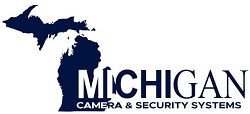Dynamic DNS Explained: Keeping Your Home Server Found
Dynamic DNS Explained: Keeping Your Home Server Found
Dynamic DNS – An Explanation and How to Accommodate

How to Accommodate Dynamic DNS: By implementing Dynamic DNS, you can manage your business or home server or devices with ease, regardless of your ISP-assigned IP address Dynamic DNS (DDNS) is a useful service that allows you to keep your home server accessible over the internet, even when your public IP address changes. Here’s a more detailed explanation:
Here’s how it works:
Dynamic DNS (DDNS) is a method that automatically updates the name server in the Domain Name System (DNS) with the active DDNS configuration of your domain, keeping your domain name linked to your changing IP address.
Why Dynamic DNS?
Most home internet connections use a dynamic IP address assigned by the Internet Service Provider (ISP). This IP address can change periodically, which poses problems if you’re running services like a web server, FTP server, or a gaming server that you need to access remotely. DDNS addresses this issue by keeping your domain name updated with your current IP address.
The Problem: Many internet service providers (ISPs) assign dynamic IP addresses to home networks. This IP address can change periodically, making it difficult to remotely access your home server or other devices using their IP address.
The Solution: DDNS acts like a middleman. You sign up for a free or paid DDNS service and choose a memorable hostname (e.g., “[invalid URL removed]”). The DDNS service monitors your IP address and automatically updates a DNS record whenever it changes.
### How Does It Work?
- **DDNS Provider**: First, you need to sign up with a DDNS provider (such as No-IP, DynDNS, DuckDNS, etc.).
- **Client Software**: After registering, your DDNS provider will give you a client software to install on your home network. This software monitors your public IP address.
- **Update Process**: Whenever your public IP address changes, the client software detects the change and sends the new IP address to your DDNS provider’s updating servers.
- **DNS Update**: The DDNS provider updates the DNS records for your domain name with the new IP address. This process ensures that your domain name always points to your correct, current IP address.
- **Access**: Now, you can access your home server using your domain name without worrying about changing IP address.
Benefits of Using DDNS:
- Remote Access: Easily access your home server, security cameras, or other devices from anywhere with an internet connection using the chosen hostname instead of a complex and ever-changing IP address.
- Convenience: No need to manually update IP addresses in configurations or tell everyone the new IP every time it changes.
- Improved Security: Some DDNS services offer additional security features like two-factor authentication for added protection.
How to Accommodate Dynamic DNS:
- Choose a DDNS provider: Several free and paid DDNS providers are available. Popular options include No-IP, Cloudflare, and Dyn. Consider factors like features, free tier limitations, and ease of use when choosing.
- Sign Up and Create an Account: Follow the provider’s instructions to register and create an account.
- Configure Your Router/Device: Access your router’s settings and locate the DDNS section. You’ll need to enter the DDNS provider’s information you obtained during signup (username, password, hostname). Some devices allow installing a DDNS client application on the device itself, bypassing router configuration.
- Verify and Test: Once configured, the DDNS service should automatically update your hostname with your current IP address. Many providers offer tools to verify the hostname resolves to your correct IP. Test remote access to your server or device using the chosen hostname.
Additional Considerations:
- Free vs. Paid Services: Free DDNS plans often have limitations like hostname restrictions or update intervals. Paid plans might offer more features, faster updates, and increased reliability.
- Security: Use strong passwords for your DDNS account and consider two-factor authentication if offered.
By implementing Dynamic DNS, you can manage your home server or devices with ease, regardless of your ISP-assigned IP address.
Read More Articles >>
Latest Trends in Access Control Technology
Service and installation for these makes and models and more





